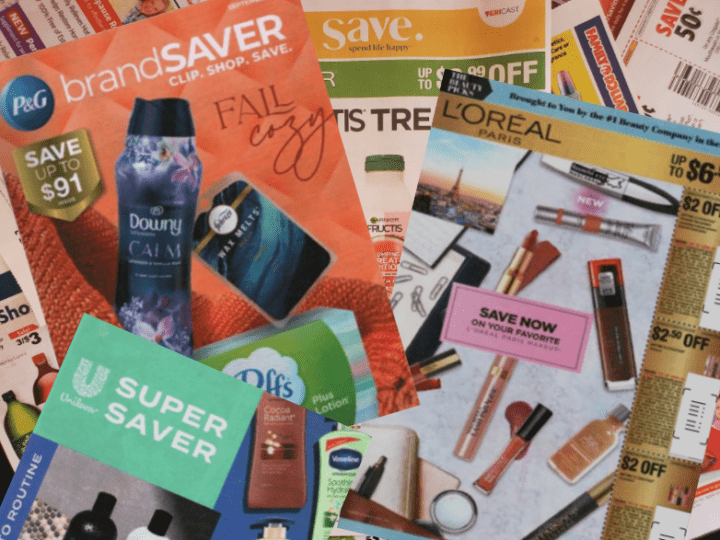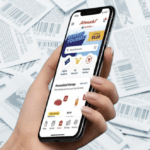
No one needed to see the stats to know that 2020 was a bad year for coupons. The only surprise is that it wasn’t far worse.
Kantar is out with its annual look at coupon distribution figures from the past year. And if you opened a coupon insert or visited a printable or digital coupon gallery at any time in 2020, you don’t need to be told that good coupons were a lot harder to find during a tumultuous year that upended our regular shopping and saving routines.
Kantar reports that manufacturers issued a total of 189 billion coupons last year, down 15.3% from the previous year. Couponing has had its ups and downs over the decades, but last year’s total marks the fewest number of coupons available in a single year since 1984, which was also the last time there were fewer than 200 billion coupons issued.
And yet, as severe as the year-over-year decline was last year, it was not drastically unlike the declines we’ve seen in the past several, non-pandemic, years. According to Kantar’s figures, 2019’s total coupon distribution figure was down 11% from 2018, which itself was down 12% from 2017.
So you can blame the coronavirus pandemic for a lot of upheaval over the past year. But the decline in the number of available coupons largely represents the continuation of a trend that was happening anyway.
As a result, while couponers desperate for deals may see the glass as half empty, Kantar prefers to see it as half full. “Despite disruptions from the pandemic,” manufacturers “delivered an impressive number of print and digital coupons in 2020,” Kantar reported cheerily.
Paper coupons remain the most common form of coupons by far. So the overall decline in the number of available coupons was due largely to a decline in the number of paper coupons. But even digital coupons suffered last year, posting an atypical 8% decline after years and years of growth.
Manufacturers actually began the year offering more digital coupons than they had the year before, and fewer paper coupons. But when the pandemic, the stay-at-home orders and the panic buying set in last March, the number of available digital coupons began dropping right away, while it took another month for the number of pre-printed paper coupons to begin falling off. Paper coupon distribution continued to decline, bottoming out in June and ending the year well off last year’s pace. But digital coupons bottomed out in April, and had largely recovered by August.
“The bounce-back was relatively quick,” Kantar noted of digital coupons, “with the second half of the year showcasing the flexibility of digital couponing to react to changing circumstances.”
Digital coupons were also better if you like saving money on food you can feed your family – unless you like to serve toothpaste, medicine and household cleaning supplies for dinner. 61.8% of all available digital coupons were for edible items, while an all-time low of just 20% of paper coupons were for food.
One particular store where digital coupons did well last year is BJ’s Wholesale Club – for reasons that may seem apparent to anyone who tried to use coupons there last year. Last March, BJ’s announced that it would “temporarily suspend the use of paper coupons” in order to “reduce touchpoints and help mitigate the spread of coronavirus.” Long after medical experts advised that the coronavirus was more likely to spread through the air rather than on the surface of items like paper coupons, BJ’s refused to relent, keeping its paper coupon ban in place until August – which raised suspicions among some shoppers that it was all a ploy to promote BJ’s digital coupon program.
As it turns out, in a ranking of the most popular websites for digital coupons, Kantar found that Coupons.com remains number one – and BJ’s vaulted into the top ten for the very first time. Wonder why?
The one coupon stat where digital was not as good as paper last year, is value. The average face value of digital coupons was up 22 cents to $1.90, while paper coupons’ average value increased 21 cents to $2.36.
Ultimately, the real winner in couponing and promotions last year was not digital or paper coupons at all. Instead, the biggest gains came in a third category – digital rebates, from cash-back apps like Ibotta and Checkout 51. While more than half of the top 100 manufacturers tracked by Kantar reduced the number of print and digital coupons they offered, 87% increased their use of digital rebates – with half more than doubling the number of rebates they offered, compared to the previous year. In all, digital rebate activity grew by a commanding 69.2%, with more than a billion offers available, with an average value of $3.15.
The bottom line – no matter what types of offers are made available, shoppers still want coupons. Nearly half of all shoppers surveyed by Kantar said “companies should help their consumers by offering discounts and promotions.”
With more people getting vaccinated and coronavirus case counts on the decline, there’s growing hope that life may soon get back to normal. Here’s hoping couponing does, too.














I miss receiving more paper coupons